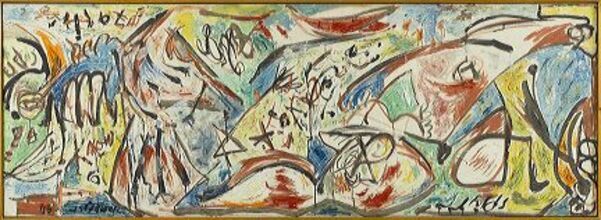Reflection of the Big Dipper
Jackson Pollock
Reflection of the Big Dipper consists of built up layers of paint with dripped enamel as the final touch, concluding the composition. It was around 1947 that Jackson Pollock traded in his brushes for sticks, trowels and knives and began adding foreign matter, such as sand, broken glass, nails, coins, paint-tube tops and bottle caps to his canvases. From this point on, Pollock's application of paint became his main theme, which he tried to radicalize. With the body of work he thus created, Pollock found a unique position within the concurrent Abstract-Expressionist movement. Reflection of the Big Dipper was exhibited at the Betty Parsons Gallery in 1948, along with sixteen other paintings by Jackson Pollock. The show received positive reviews. Pollock's works from this time are a transitional step between a more traditional handling of paint and his revolutionary technique of dripping paint on canvases off a large scale.

Makers
Collection
Production date
1947
Library
Click here to view 28 related documents
Dimensions
113 x 94 x 4.5cm.
Material
paint on canvas
Object number
A 2971


